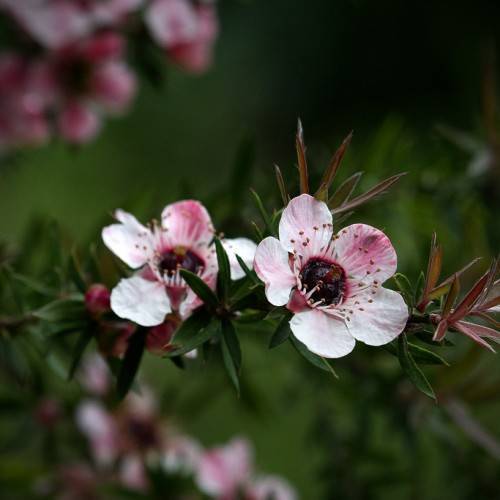
broom tea tree
Leptospermum scoparium
Cycle:
Perennial
Watering:
Average
Hardiness Zone:
9 - 10
Flowers:
Flowers
Sun:
Full sun
Fruits:
Fruits Ready In Summer
Leaf:
Yes
Growth Rate:
High
Maintenance:
Low
Drought Tolerant:
Yes
Salt Tolerant:
Yes
Thorny:
Yes
Invasive:
Yes
Care Level:
Medium
watering
Broom tea tree plants need a moderate amount of water and should be watered regularly during the growing season. The soil should be kept moist but not soggy. During the summer, water the plant every 7-10 days, increase the frequency if the soil appears dry. During the winter months water the plants less often, usually every 3-4 weeks. Always check the soil before watering to make sure it is not overly wet. In addition, avoid wetting the foliage to reduce the risk of leaf diseases.
sunlight
The broom tea tree (Leptospermum scoparium) prefers full sun and can tolerate both partial sun as well as light shade. For optimal growth, it requires at least 6 hours of direct sun exposure daily. It is generally easier for this species to survive and thrive in humid climates (like coastal areas) where temperatures remain cooler and the soil becomes better hydrated. However, it is not necessary for this species to be planted near coastal areas; a common garden variety of the species can survive in any climate with adequate care and sunlight. Moreover, the broom tea tree is highly drought tolerant and does not require frequent watering to survive.
pruning
Broom tea tree (Leptospermum scoparium) should be pruned 2 or 3 times a year. It should be lightly pruned in spring to encourage dense, compact growth and heavier pruning in summer and fall to maintain shape and prevent overgrowth. During summer and fall pruning, focus on removing long, errant branches and thinning out old foliage. You should avoid pruning more than 1 third of the branches at 1 time to maintain a balanced shape. Make sure to use clean, sharp pruners to get a neat, clean cut. Additionally, keep an eye out for dried or dead tips and branches and remove them regularly.
